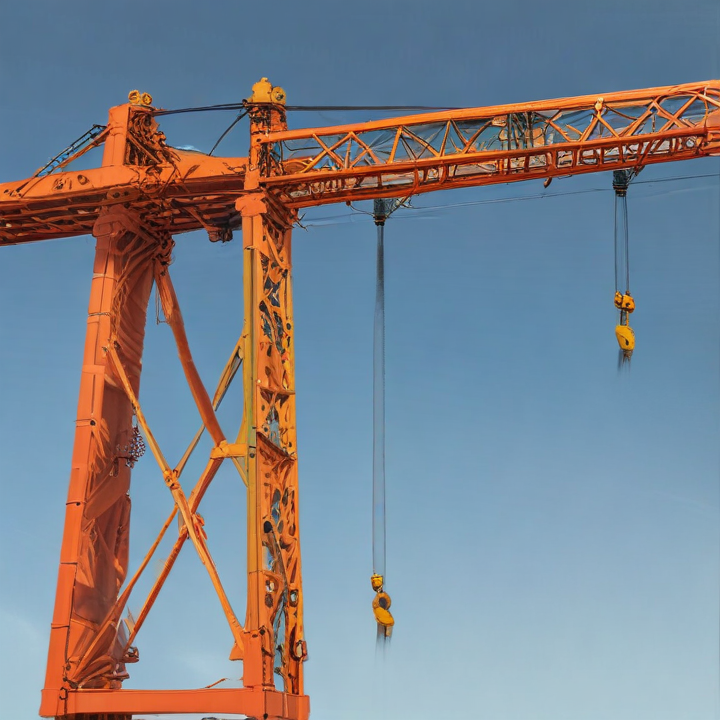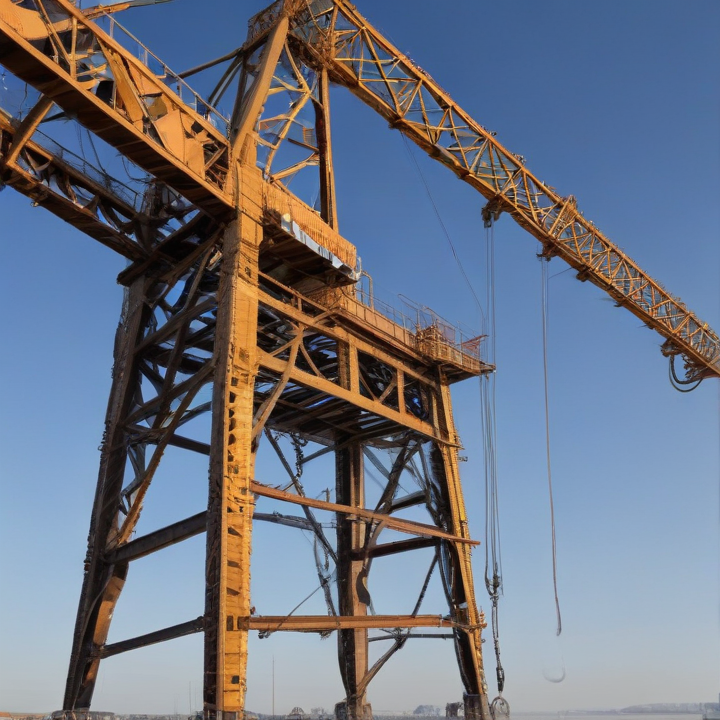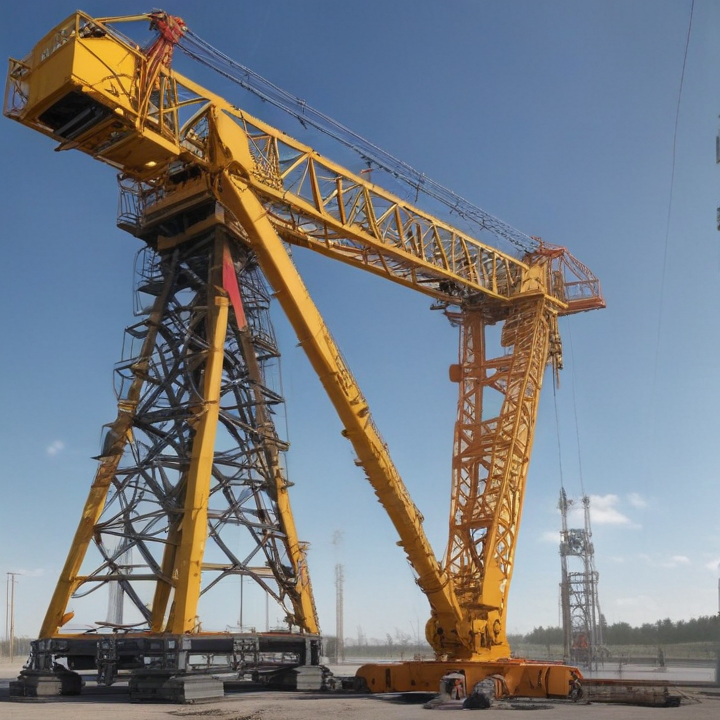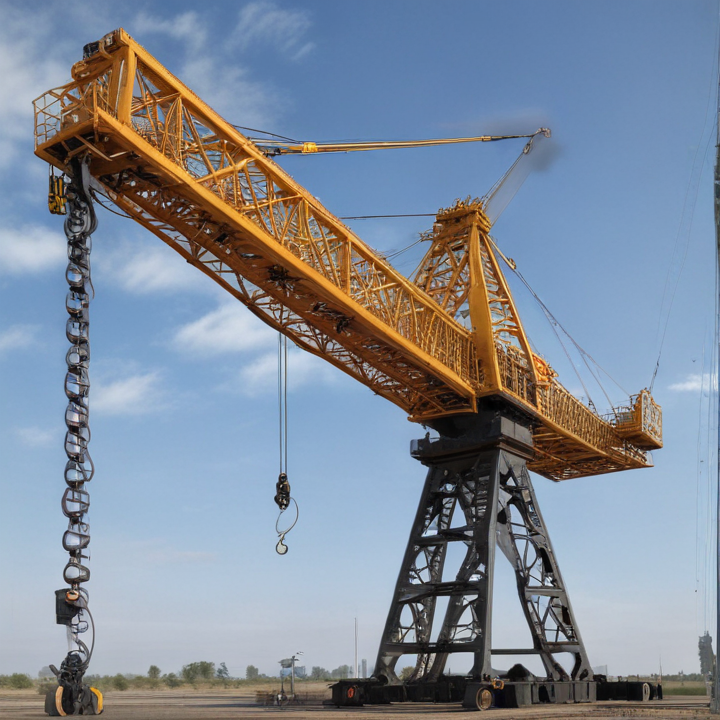lattice boom crane Safety Certifications
Lattice boom cranes are essential for heavy lifting and construction projects, but their operation carries inherent risks. To mitigate these risks, various safety certifications and standards are mandatory or highly recommended. These certifications ensure that both the equipment and operators adhere to stringent safety protocols.
1. OSHA Compliance: The Occupational Safety and Health Administration (OSHA) establishes regulations for crane safety in the United States. OSHA standards (29 CFR 1926 Subpart CC) cover all facets of crane operation, including operator certification and equipment inspection.
2. ASME B30 Standards: The American Society of Mechanical Engineers (ASME) has a series of standards under B30 that address crane safety. ASME B30.5 specifically pertains to Mobile and Locomotive Cranes, including lattice boom cranes. Key aspects include inspection, maintenance, and operational safety.
3. ANSI/ASSP A10 Series: The American National Standards Institute (ANSI) in conjunction with the American Society of Safety Professionals (ASSP) offers the A10 standards for construction and demolition operations. These standards provide additional guidelines for safe crane operations.
4. NCCCO Certification: The National Commission for the Certification of Crane Operators (NCCCO) offers certification programs for crane operators, riggers, and signalpersons. NCCCO certification demonstrates that individuals have met stringent professional standards.
5. API RP 2D: The American Petroleum Institute’s Recommended Practice 2D offers safety standards for the operation, inspection, and maintenance of offshore cranes, which can also be applicable to onshore lattice boom cranes in certain contexts.
6. EN 13000: In Europe, the EN 13000 standard, under the European Committee for Standardization (CEN), defines safety requirements for mobile cranes, including lattice boom types. This certification ensures compliance with EU safety directives.
7. Third-Party Inspections: Many jurisdictions require or recommend third-party inspections to verify that cranes meet applicable safety standards. Organizations such as Lloyd’s Register or TÜV SÜD offer these inspections.
These certifications and standards are crucial for ensuring the safe operation of lattice boom cranes, protecting both operators and surrounding personnel. Compliance with these safety protocols can prevent accidents and enhance operational efficiency.
List Reference Technical Parameters of “lattice boom crane”
Certainly! Below are the key technical parameters of a lattice boom crane:
1. Lifting Capacity:
– Defines the maximum weight the crane can lift, often expressed in tons.
2. Boom Length:
– Refers to the length of the lattice boom, typically measured in feet or meters. This can vary with extensions.
3. Lifting Height:
– Maximum height to which the boom can lift a load, dependent on boom length and configuration.
4. Radius:
– The horizontal distance from the crane’s centerline to the load’s center of gravity. Determines lifting capacity at various points.
5. Counterweight:
– Weight used to balance the crane. Varies with models and configurations and affects stability and lifting capacity.
6. Swing Speed:
– The speed at which the crane can rotate, often expressed in revolutions per minute (RPM).
7. Line Speed:
– Speed at which the hoist line is raised or lowered, usually in meters per minute or feet per minute.
8. Hoisting Mechanism:
– Includes details on the types of winches, their capacities, and motor specifics.
9. Engine Power:
– Specifies the engine type and output power, typically measured in horsepower (HP) or kilowatts (kW).
10. Dimensions:
– Overall size of the crane when assembled, including width, height, and length.
11. Weight:
– Total weight of the crane, impacting transportation and setup requirements.
12. Outriggers and Stability Enhancers:
– Details on the use of outriggers for stabilization, including their spread and load capacity.
13. Travel Speed:
– Maximum speed the crane can travel, relevant for mobile lattice boom cranes.
14. Wind Speed Rating:
– Maximum operational wind speed for safe use.
15. Control System:
– Type of control system used (e.g., manual, hydraulic, electronic) and its features.
16. Safety Features:
– Includes overload protection systems, anti-two block systems, and other safety mechanisms.
These technical specifications are essential for determining the operational capabilities and suitability of a lattice boom crane for specific lifting tasks.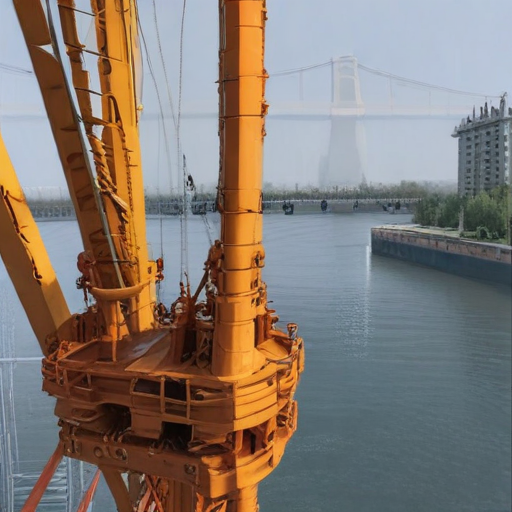
List Product features of “lattice boom crane”
A lattice boom crane is a versatile and powerful type of crane widely used in heavy lifting and construction projects. Key features of a lattice boom crane include:
1. Lattice Boom Structure: The boom is composed of a lattice framework, providing exceptional strength while minimizing weight, which increases the crane’s lifting capacity and reach.
2. High Lifting Capacity: Due to its design, a lattice boom crane can lift very heavy loads, often exceeding hundreds of tons, making it suitable for large-scale construction and industrial projects.
3. Extended Reach: The lattice boom can be extended with additional sections, providing significant height and reach, which is ideal for tall structures and deep excavations.
4. Modular Design: The crane’s boom is often modular, allowing for flexible configurations and easy transport of components to different job sites.
5. Hydraulic System: Equipped with advanced hydraulic systems that enable smooth and precise movements, enhancing operational efficiency and safety.
6. Wheeled or Tracked Base: Available with either wheeled or tracked bases, allowing for mobility on various terrains and improved stability during operations.
7. Counterweights: Integrated counterweights enhance stability and balance during heavy lifts, ensuring safe and efficient operation even under challenging conditions.
8. Operator Cab: Ergonomically designed operator cabs with advanced controls and panoramic visibility ensure ease of use and safety for the operator.
9. Safety Features: Equipped with safety mechanisms such as overload protection systems, anti-two block devices, and limit switches to prevent accidents and equipment damage.
10. Versatile Attachments: Compatible with various lifting attachments, such as hooks, slings, buckets, and grabs, expanding its application in different industries.
11. Durability: Built with high-quality materials and engineering standards, ensuring long-term durability and reliability even in demanding environments.
12. Electronic Monitoring Systems: Modern lattice boom cranes often include electronic monitoring systems for real-time data on crane performance, enhancing operational efficiency and maintenance planning.
Overall, the lattice boom crane’s combination of strength, versatility, and advanced features makes it an indispensable tool in the construction and heavy lifting industries.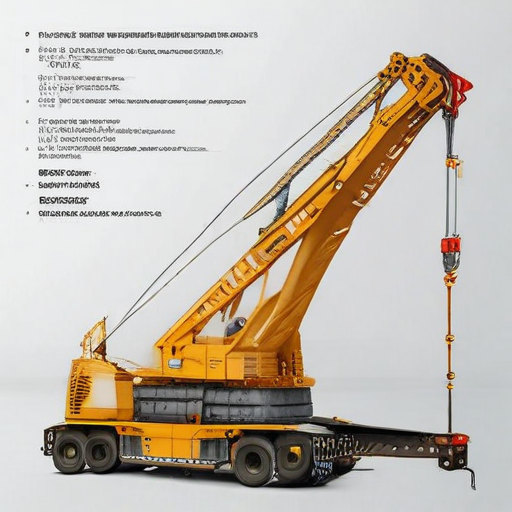
List Various Types of “lattice boom crane”
Lattice boom cranes are versatile, heavy-lifting machines extensively used in construction, industrial, and heavy-duty lifting applications. They are characterized by their lattice-like boom structure, which provides strength without excessive weight. Below are various types of lattice boom cranes:
1. Crawler Lattice Boom Cranes:
– Mounted on a crawler track system, these cranes offer excellent mobility on soft ground and uneven terrain. They are commonly used in large-scale construction projects due to their high lifting capacity and stability.
2. Truck-Mounted Lattice Boom Cranes:
– Installed on a standard truck chassis, these cranes combine the mobility of a truck with the lifting power of a lattice boom. They are suitable for projects requiring frequent relocation and offer quick setup times.
3. Ringer Cranes:
– Featuring a circular track (ring) that enhances stability and lifting capacity, ringer cranes are used for exceptionally heavy and high lifts. They are typically deployed at large industrial projects and power plants.
4. Tower Cranes with Lattice Booms:
– These cranes have a lattice boom on top of a tall tower and are used for constructing high-rise buildings. The design allows for high vertical reach and can handle heavy loads efficiently.
5. Derrick Cranes:
– Employing a lattice boom and a stationary base, derrick cranes are often used for lifting tasks in confined spaces such as atop buildings or in shipyards.
6. Floating Cranes:
– Mounted on barges or vessels, these cranes are essential for maritime construction projects, such as building bridges and offshore platforms.
7. Rail-Mounted Lattice Boom Cranes:
– These cranes are positioned on rails and are suitable for lifting tasks along rail tracks such as at ports or steel mills.
Each type of lattice boom crane is designed to address specific site conditions and project requirements, making them indispensable across various industries for their strength, flexibility, and reliability.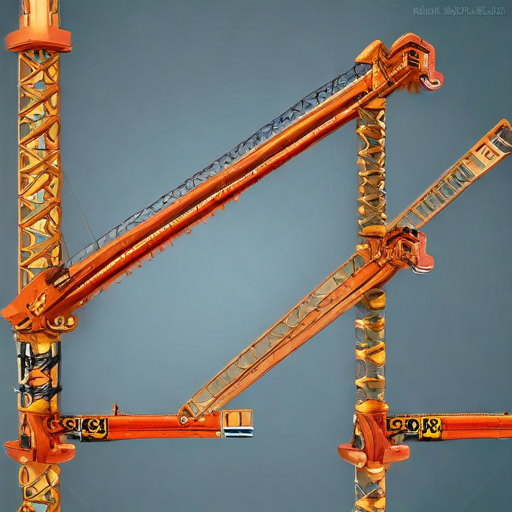
List Application of “lattice boom crane”
Lattice boom cranes are versatile pieces of heavy machinery predominantly used in construction and industries requiring heavy lifting and precise maneuvering. Their applications can be summarized as follows:
1. Construction: Due to their ability to lift extremely heavy materials, lattice boom cranes are routinely used in the construction of buildings, bridges, and other massive structures. Their extended reach and stability make them ideal for high-rise buildings and complex architectural projects.
2. Oil and Gas: In the extraction and refining sectors, these cranes are essential for erecting and maintaining large-scale rigs and platforms. They handle tasks such as pipeline installation and heavy equipment relocation that are critical in these industries.
3. Infrastructure Projects: Lattice boom cranes play a pivotal role in large civil engineering projects like highway construction, railway development, and port facility upgrades. They are used to handle and place large bridge segments, beams, and other infrastructural components.
4. Wind Energy: The renewable energy sector often relies on these cranes to install and maintain wind turbines. Their ability to reach great heights and lift heavy turbine components is critical for the efficient construction and upkeep of wind farms.
5. Marine and Shipbuilding: In shipyards, lattice boom cranes are employed to assemble large ship sections, move heavy parts, and load and unload cargo. Their robustness ensures safe and efficient handling of massive materials.
6. Mining: Lattice boom cranes are utilized in the assembly and maintenance of large mining equipment. They assist in operations such as the installation of heavy processing machinery and the relocation of mining infrastructure.
7. Heavy Manufacturing: In manufacturing plants dealing with heavy metal fabrication, these cranes are used to lift and move large machine parts, molds, and other massive components essential for manufacturing processes.
These applications highlight the crane’s flexibility, strength, and indispensability in operations that require extraordinary lifting capabilities and precision.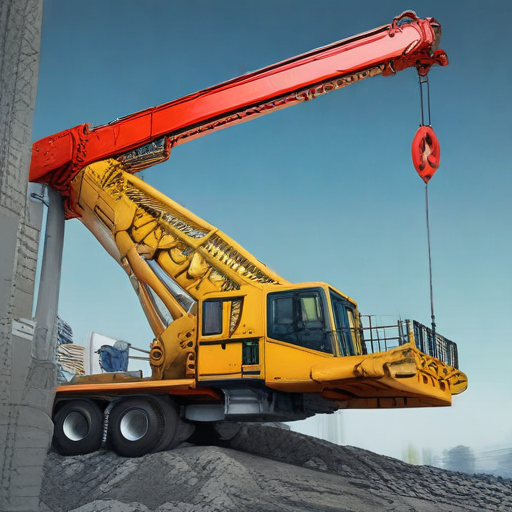
List Buyer Types of “lattice boom crane”
When examining the buyer types for lattice boom cranes, it’s evident that the market is comprised of diverse sectors, each with specific needs and applications. These diverse sectors include construction companies, energy firms, logistics providers, and rental companies. Here’s a closer look at each buyer type:
1. Construction Companies: These organizations are among the primary buyers of lattice boom cranes. They use these cranes for various heavy lifting tasks on construction sites, such as lifting steel beams, pre-fabricated sections, and other heavy materials. The cranes are essential for constructing bridges, skyscrapers, and large industrial structures.
2. Energy Firms: Companies involved in the energy sector, particularly in oil and gas, wind energy, and power plants, also frequently purchase lattice boom cranes. These cranes are used to install and maintain heavy equipment like drilling rigs, wind turbines, and other large-scale machinery essential for energy production.
3. Logistics and Transport Companies: Firms specialized in heavy logistics and transport often require lattice boom cranes to load and unload heavy freight, both in ports and rail yards. Their ability to handle extremely large loads makes them indispensable for moving heavy equipment safely and efficiently.
4. Rental Companies: Equipment rental firms constitute another significant segment. These companies purchase lattice boom cranes to rent them out to construction firms, infrastructure developers, and other businesses needing temporary access to heavy lifting equipment. The rental model helps many businesses that require cranes only for specific periods to avoid the high costs of purchasing and maintaining their equipment.
5. Mining and Heavy Industry: Mining companies often need powerful cranes for the extraction and transportation of heavy mining equipment and materials. The durability and power of lattice boom cranes make them ideal for the tough conditions in mining environments.
In summary, lattice boom cranes serve critical roles across multiple industries, primarily construction, energy, heavy logistics, equipment rental, and mining, due to their powerful lifting capabilities and versatility.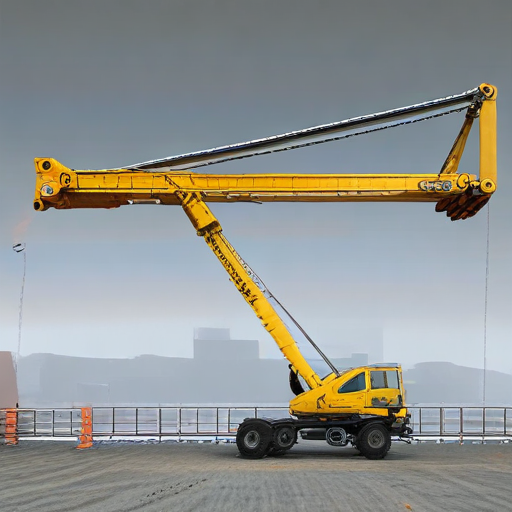
List “lattice boom crane” Project Types for Different Industries
Lattice boom cranes are versatile lifting devices commonly used across various industries for their ability to handle heavy loads and operate in challenging environments. Here are some project types for different industries where lattice boom cranes are indispensable:
Construction
1. High-Rise Buildings: Erection of steel frameworks, lifting heavy construction materials like beams, columns, and concrete panels.
2. Bridge Construction: Installation of large prefabricated bridge sections and heavy-duty components.
Oil and Gas
1. Rig Setup: Assembly and disassembly of oil rigs, lifting heavy drilling components.
2. Pipeline Construction: Handling and placement of large pipeline sections and other heavy machinery.
Energy and Utilities
1. Wind Turbine Installation: Erecting towers and placing heavy turbine components.
2. Power Plant Construction: Lifting and positioning of large machinery and equipment such as generators and boilers.
Maritime and Shipbuilding
1. Ship Construction: Assembly of large ship components, including hull sections.
2. Dockside Operations: Loading and unloading heavy cargo, equipment, and materials.
Mining
1. Equipment Assembly: Installation and relocation of heavy mining equipment such as crushers, conveyors, and heavy-duty vehicles.
2. Site Development: Clearing and leveling the ground, installation of heavy structural components.
Aerospace
1. Aircraft Construction: Lifting and positioning of large aircraft components during assembly.
2. Space Launch Facilities: Handling heavy rocket components and launching apparatus.
Heavy Machinery Relocation
1. Factory Relocation: Moving large industrial equipment from one site to another.
2. Industrial Renovation: Replacement or installation of new machinery in existing facilities.
Agriculture
1. Silo Construction: Erecting large grain silos and storage tanks.
2. Farm Infrastructure: Building and maintaining large agricultural buildings and facilities.
Lattice boom cranes, with their flexibility and significant lifting capacity, find widespread application across these industries, facilitating complex engineering tasks and ensuring operational efficiency.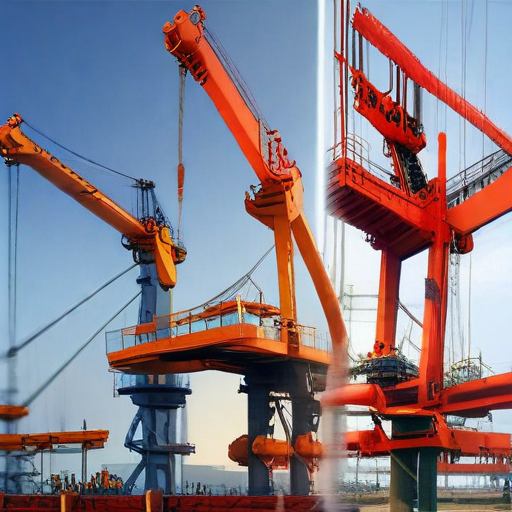
lattice boom crane Accessories Upgrades and Custom Manufacturing Options
Lattice boom cranes are pivotal in industries requiring heavy lifting and precise load handling. Enhancing their capabilities through accessories, upgrades, and custom manufacturing options can significantly boost operational efficiency and safety.
Accessories:
1. Boom Extensions: Extend the crane’s reach, facilitating complex tasks.
2. Jib Attachments: Enhance versatility, enabling operations in confined or awkward spaces.
3. Load Indicators and Weigh Systems: Ensure precise load measurements and safe lifting practices.
4. Wind Speed Indicators: Crucial for outdoor operations, providing real-time wind data to avoid unsafe conditions.
5. Anti-Two Block Devices: Prevent dangerous conditions where the hook block meets the boom tip.
Upgrades:
1. Hydraulic Systems: Enhance control and operational efficiency with fully integrated hydraulic systems.
2. Modern Control Systems: Upgrade to advanced digital control systems for improved precision and ease of use.
3. Safety Systems: Incorporate the latest safety features, like emergency stop systems and advanced load monitoring technologies.
4. Motor and Power Upgrades: Increase the crane’s power and extend its service life with modern, energy-efficient motors.
Custom Manufacturing Options:
1. Tailor-Made Booms: Design-specific lattice booms to meet unique project requirements, considering length, strength, and flexibility.
2. Custom Counterweights: Develop weights tailored to specific operational environments, enhancing stability and safety.
3. Adapted Base Frames: Manufacture base frames to meet specific ground conditions and operational constraints.
4. Specialized Attachments: Create unique attachments designed for specific tasks, such as pipe handling or heavy-duty lifting scenarios.
Investing in these accessories, upgrades, and custom manufacturing options ensures that lattice boom cranes remain at the forefront of heavy lifting capabilities, meeting diverse and evolving industry demands safely and efficiently.
List Quality Control and The Manufacturing Process of “lattice boom crane”
Quality Control of Lattice Boom Crane
1. Incoming Material Inspection:
– Verify the quality and specifications of raw materials (e.g., high tensile steel).
– Conduct chemical and mechanical tests to ensure compliance with standards.
2. Fabrication Quality:
– Inspect the accuracy of cutting, drilling, and welding operations.
– Perform dimensional checks using templates and 3D measurement tools.
3. Nondestructive Testing (NDT):
– Utilize techniques like ultrasonic testing, radiography, and magnetic particle inspection to detect internal and surface defects.
4. Assembly Verification:
– Ensure precise alignment and secure connections of primary and secondary lattice components.
– Conduct bolt torque checks and structural integrity assessments.
5. Load Testing:
– Perform static and dynamic load tests to validate the crane’s load-bearing capabilities.
– Monitor deflection and stress distribution under load conditions.
6. Final Inspection:
– Conduct a thorough examination of the assembled crane including paint quality, signage, and functionality of all mechanical systems.
– Validate compliance with safety standards and regulatory requirements.
Manufacturing Process of Lattice Boom Crane
1. Design and Engineering:
– Develop detailed designs using CAD software to meet operational and safety requirements.
– Perform simulations and validate designs through finite element analysis (FEA).
2. Material Procurement:
– Source high-grade materials specified in the design to ensure durability and performance.
– Implement quality assurance procedures for incoming materials.
3. Fabrication:
– Cut, drill, and shape steel components using CNC machines and plasma cutters.
– Weld sections together employing robotic or manual welding techniques as per the welding procedures.
4. Machining:
– Precision-machine components where required, ensuring tight tolerances for mechanical interfaces.
– Perform surface treatment processes like sandblasting and coating to enhance durability.
5. Assembly:
– Assemble lattice boom sections and other structural elements.
– Integrate mechanical systems such as winches, pulleys, and hydraulic components.
6. Quality Assurance:
– Carry out all necessary inspections and testing (NDT, load testing).
– Address any non-conformities immediately to maintain quality standards.
7. Final Assembly and Testing:
– Integrate and validate the full system, including electronic and safety systems.
– Conduct comprehensive final inspections and operational tests.
8. Shipping and Installation:
– Disassemble the crane for transportation if necessary.
– Provide detailed instructions and support for installation and commissioning at the operation site.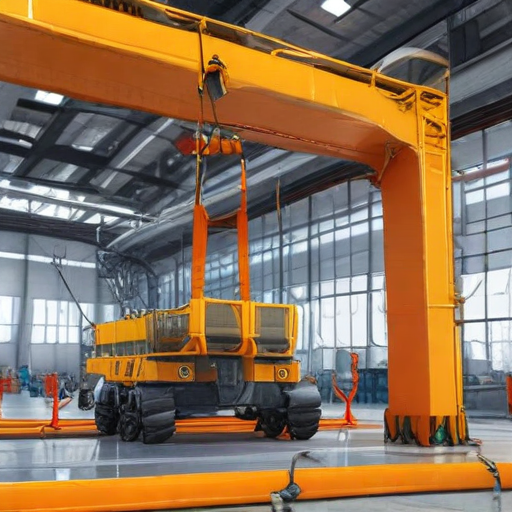
How to use “lattice boom crane”
Using a lattice boom crane requires careful planning and adherence to safety protocols. Here’s a concise guide:
1. Pre-Operation Checks:
– Inspection: Conduct a thorough inspection of the crane. Check structural integrity, hydraulic systems, and electrical components. Ensure all safety devices are operational.
– Site Preparation: Assess ground conditions. Ensure the crane is positioned on firm, level ground and within safe proximity to the load.
2. Setup:
– Assemble Boom Sections: Depending on the required lift height, assemble the lattice boom sections according to the manufacturer’s guidelines.
– Rigging: Attach the appropriate lifting gear, such as slings and shackles, ensuring they are rated for the load’s weight.
3. Operation:
– Load Planning: Understand the load chart specific to your crane. Calculate the lifting radius, boom length, and weight to ensure the crane operates within safe limits.
– Communication: Use clear hand signals or radios for communication between the operator and ground personnel.
– Lifting: Slowly hoist the load, ensuring it is balanced and secure. Maintain a steady pace and avoid sudden movements.
– Boom & Swing: Carefully boom up/down or swing the load into position, constantly monitoring for obstructions and adhering to the planned path.
4. Safety Measures:
– Stay Clear of Load: Ensure all personnel maintain a safe distance from the load.
– Wind Conditions: Monitor and adjust operations based on wind speed and direction.
– Emergency Procedures: Be familiar with and ready to implement emergency stop procedures if needed.
5. Post-Operation
– Lower and Secure Boom: Once the lift is complete, carefully lower and secure the boom.
– Inspect for Damage: After each use, inspect the crane and lifting gear for any signs of wear or damage.
By following these steps, operators can safely and efficiently use a lattice boom crane for heavy lifting tasks.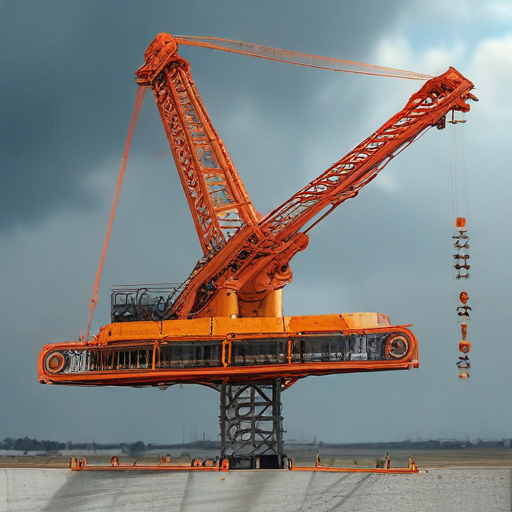
“lattice boom crane” Comparative Analysis
A lattice boom crane is a type of crane featuring a lattice structure for its boom, providing high strength-to-weight ratios and enabling the lifting of very heavy loads. This comparative analysis will focus on the key characteristics, advantages, and disadvantages relative to other types of cranes, notably telescopic boom cranes and hydraulic cranes.
Key Characteristics:
1. Structure and Design:
– Lattice Boom Cranes: Comprise interconnected steel bars forming a lattice, providing high structural integrity with reduced weight.
– Telescopic Boom Cranes: Feature a segmented, retractable boom that can extend or retract depending on the required lifting height.
– Hydraulic Cranes: Utilize hydraulic mechanisms to extend and lift loads, often with a simpler boom design compared to lattice cranes.
2. Lifting Capacity and Height:
– Lattice Boom Cranes: Generally excel in lifting extremely heavy loads and reaching significant heights, ideal for large-scale construction and industrial projects.
– Telescopic Boom Cranes: Offer versatile height adjustments but typically have lower lifting capacities compared to lattice boom cranes.
– Hydraulic Cranes: Suitable for medium to heavy loads with moderate height requirements; flexibility in operation is their main advantage.
Advantages:
– Lattice Boom Cranes:
– Superior lifting capacity due to their robust lattice structure.
– Efficient weight-to-strength ratio, enabling the handling of heavy-duty tasks.
– Ideal for long-term and heavy construction projects requiring stable and consistent lifting power.
– Telescopic Boom Cranes:
– Quick setup and takedown, enabling easy transport and mobility.
– Flexibility in reaching various heights without needing multiple setups.
– Hydraulic Cranes:
– Highly maneuverable with simpler operational mechanisms.
– Ideal for tasks requiring precision and moderate lifting capabilities.
Disadvantages:
– Lattice Boom Cranes:
– Heavier and more cumbersome, requiring significant setup and transport time.
– Less flexibility in height adjustment compared to telescopic cranes.
– Telescopic Boom Cranes:
– Lower lifting limits compared to lattice boom models.
– More susceptible to stability issues under extreme load conditions.
– Hydraulic Cranes:
– Limited in lifting capacity compared to lattice boom and some telescopic models.
– Hydraulic components require meticulous maintenance and are prone to leaking.
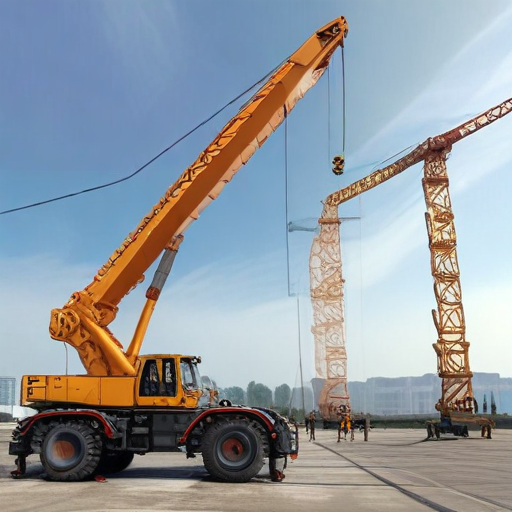
“lattice boom crane” Warranty and Support
A lattice boom crane is a significant investment, and protecting this investment with a comprehensive warranty and reliable support is vital. Typically, manufacturers of lattice boom cranes offer warranties that cover defects in materials and workmanship for a specified period, which can range from one to multiple years. These warranties usually encompass critical components such as the boom structure, winches, and hydraulic systems.
To ensure peace of mind, it’s essential to understand the specifics of the warranty. This includes what is covered and what is excluded, such as wear parts, maintenance items, or damage due to improper use. Some manufacturers might offer extended warranty options for an additional cost, providing prolonged protection beyond the standard terms.
Support is equally crucial for the efficient operation and longevity of your crane. Manufacturers and authorized dealers often offer robust support services, including:
1. Technical Assistance: Access to expert technicians who can diagnose and address issues, either remotely or on-site.
2. Spare Parts Availability: A well-stocked inventory of genuine spare parts ensures minimal downtime.
3. Maintenance Programs: Regularly scheduled maintenance services help in early detection of potential problems, ensuring the crane remains in optimal condition.
4. Training: Comprehensive training programs for operators and maintenance personnel to ensure the crane is used safely and efficiently.
Some manufacturers also provide digital support platforms, offering real-time monitoring, diagnostic tools, and software updates.
Before purchasing a lattice boom crane, review the warranty and support policies in detail to ensure they meet your operational needs. Selecting a manufacturer or dealer with a strong reputation for post-sale support can significantly enhance the operational lifespan and reliability of your crane.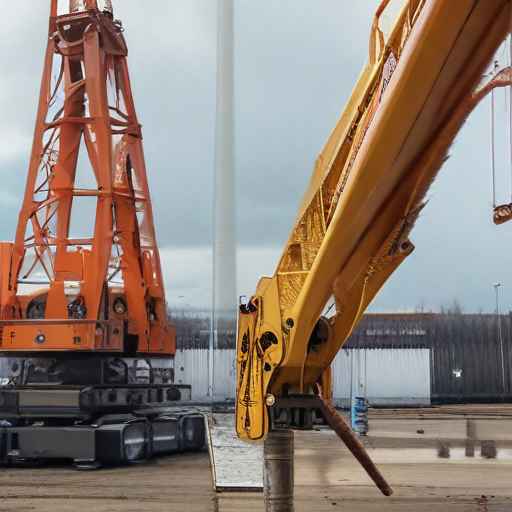
List “lattice boom crane” FAQ
Lattice Boom Crane FAQ
1. What is a Lattice Boom Crane?
A lattice boom crane is a type of crane featuring a lattice-like structure for the boom, enhancing strength while minimizing weight. It’s commonly used in construction, shipping, and heavy lifting.
2. What are the key components of a Lattice Boom Crane?
Key components include the lattice boom, mast, jib, counterweights, load line, hoist, and the carrier (for mobile versions).
3. What are the advantages of a Lattice Boom Crane?
– High lifting capacity due to structural design
– Reduced boom weight
– Versatility in configurations for different lifting needs
– Better reach and height potential
4. How does a Lattice Boom Crane differ from a telescopic crane?
A lattice boom crane uses a fixed-length, truss-like boom structure, whereas a telescopic crane features an extendable, telescoping boom. The lattice boom is generally favored for heavier lifts, while telescopic cranes excel in ease of transport and setup.
5. What types of Lattice Boom Cranes are available?
– Crawler lattice boom cranes: Mounted on tracks for mobility on rough terrain.
– Truck-mounted lattice boom cranes: Mounted on trucks for easier road transport.
– Tower cranes with lattice booms: Used for erecting tall structures.
6. How are Lattice Boom Cranes transported?
The boom sections are typically disassembled and transported as separate parts, making logistics easier and more flexible.
7. What is the lifting capacity of a Lattice Boom Crane?
Lifting capacity can range from a few tons to several hundred tons, depending on the model and configuration.
8. Are there specific safety measures for operating a Lattice Boom Crane?
Yes, it involves regular inspections, maintaining proper load charts, using trained operators, ensuring stable ground conditions, and following manufacturer guidelines.
9. Can Lattice Boom Cranes be used for offshore applications?
Yes, specialized models are equipped for offshore lifting operations, often found on oil rigs and similar platforms.
10. How do I select the right Lattice Boom Crane for my project?
Consider factors such as load weight, lift height, site conditions, and mobility requirements. Consulting with a crane specialist can provide valuable insights for optimal selection.
This FAQ provides a concise overview of lattice boom cranes in a user-friendly format, ideal for quick reference.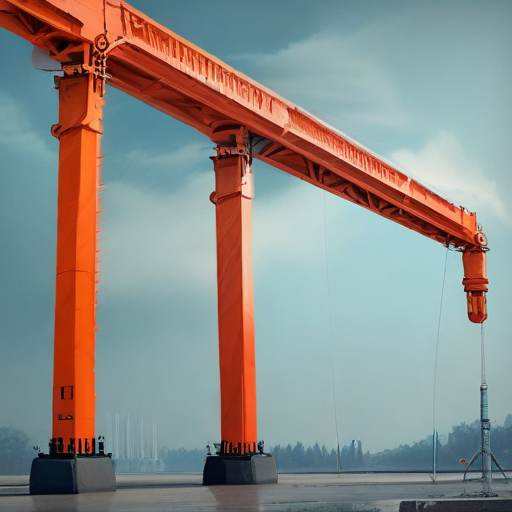
Top 10 FAQ with answer about lattice boom crane for Buyer Sourcing from China
1. What is a Lattice Boom Crane?
– A lattice boom crane is a type of crane that uses a lattice structure for its boom, offering a lightweight yet strong design that is ideal for heavy lifting and long-reach tasks.
2. What are the Advantages of Lattice Boom Cranes?
– These cranes offer a high strength-to-weight ratio, excellent reach, and stability, making them ideal for large-scale construction projects, especially in challenging environments.
3. What Should I Consider When Sourcing from China?
– Key factors include manufacturer reputation, compliance with international standards, quality control processes, after-sales support, and cost-effectiveness.
4. How to Ensure the Quality of Lattice Boom Cranes from China?
– Check for ISO certifications, request detailed product specifications, ask for factory visits, and inspect for references from previous international buyers.
5. What is the Lead Time for Manufacturing and Delivery?
– Lead times can vary; typically, it ranges from 6 to 12 weeks. Always confirm with the manufacturer and account for shipping duration.
6. Are Chinese Manufacturers Compliant with International Regulations?
– Many reputable Chinese manufacturers comply with international standards such as CE, ISO, and ANSI. Always verify the standards specified by the manufacturer.
7. How Can I Verify a Manufacturer’s Credibility?
– Conduct thorough research including third-party audits, check business licenses, and verify export history. Use platforms like Alibaba with verified suppliers.
8. What Are the Payment Terms Generally Accepted?
– Common payment terms include T/T (Telegraphic Transfer), L/C (Letter of Credit), and occasionally PayPal for smaller transactions.
9. Can We Get Custom-Made Lattice Boom Cranes?
– Yes, many manufacturers offer customization based on project-specific requirements. Discuss your needs upfront to ensure feasibility.
10. What Kind of After-Sales Support is Available?
– Support usually includes warranty, spare parts availability, technical support, and sometimes on-site training. Confirm these details during the negotiation phase.
By keeping these FAQs in mind, buyers can make more informed decisions when sourcing lattice boom cranes from China, ensuring both quality and satisfaction in their procurement process.

